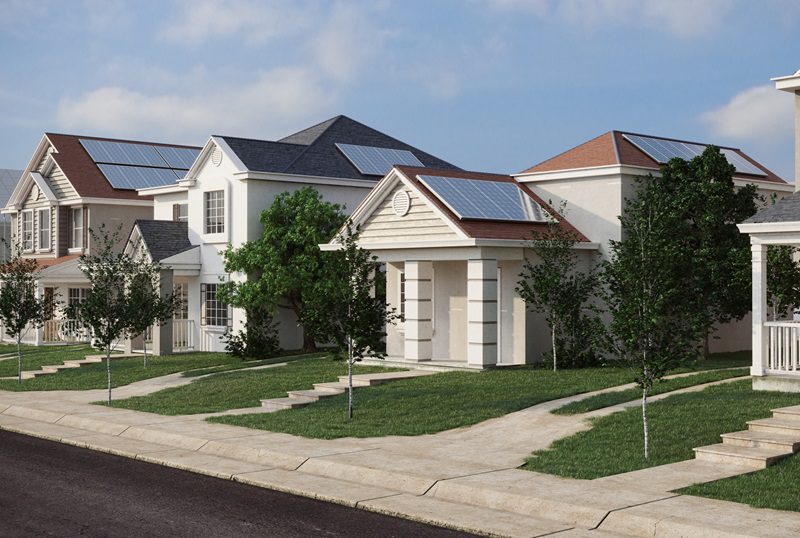Are underwriters pricing for new tech in homes?

Globally, the property and casualty insurance industry may be underestimating the vulnerability of property that uses technology to adapt to climate change, a speaker told attendees at the 38th Swiss Re Outlook breakfast held in Toronto last Tuesday.
Also, property underwriters should watch for the influence of social inflation on claims costs, driven in part by higher consumer expectations during a rebuild, warned Gianfranco Lot, chief underwriting officer of P&C reinsurance at Swiss Re.
Lot said 50% of the world’s catastrophe losses are caused by secondary perils such as floods, wildfires, and severe weather, including wind and hail. In a recent report, Swiss Re estimated 2023 global insured losses due to natural catastrophes was US$108 billion.
Secondary perils drove up the Cat damage numbers in 2023, a Swiss Re sigma study reported.
The “frequency of events is main driver of insured loss accumulation, with severe convective storms (SCS) accounting for record high US$64 billion in 2023. Eighty-five percent of SCS-losses in 2023 originated in the U.S., while growing the fastest in Europe.”
Lot observed many homes now include emerging technologies to detect and mitigate insured losses. In addition, they may be using these technologies to promote energy efficiency, thereby reducing greenhouse gas emissions leading to climate change.
But he wondered if property underwriters are taking into account the additional costs required to replace such technology. Cats caused by secondary perils are notoriously difficult to model, he observed. He then gave a personal example of what he’s talking about.
“My house [in Italy] is refurbished,” he said. “It complies with all sorts of energy regulations. It’s very energy efficient. Of course, I have insulation; I have solar panels; I have all sorts of sensors, cameras, and so on.
“These types of houses are just more vulnerable to secondary perils — floods, hailstorms, strong winds, and strong rain, even. I think we as an industry underestimate how vulnerable these new, transition-to-green technologies are; the new types of products that are being embedded into houses….
“We underestimate how vulnerable these new buildings are, these new technologies are, and how costly it is, which has an impact on how we value homes. Property is the biggest asset class worldwide. The impact of natural disasters, especially in disaster-prone areas that are beautiful to live in — Florida, close to the woods, coastal areas — are just more exposed.”
Claims costs to fix these new buildings and their technology has been exacerbated by the rise in interest rates, he added.
Related: How IoT devices can cause a liability headache for insurers
He also observed customers’ higher expectations during a rebuild are leading to some partial property losses turning into total losses, thus increasing insurers’ claims costs. Again, he cited a personal example of how this can happen, showing a slide of his home in Italy, located in a region filled with vineyards.
“This is my house,” he said, adding he owned a vineyard. “The secondary homes have enough insurance. I go there at least most of the time. Unfortunately, last July we had a hailstorm in that region, which destroyed all the vineyards. About 60% of the harvests was gone. My vineyard was also destroyed.”
Lot noted the hail perforated three facades of the home. During the reconstruction process, the contractor provided two different estimates to repair the damage. One estimate was for the three damaged home facades he showed on the slide. The second estimate was to replace four of the facades, not just the three damaged ones pictured.
“Well, it’s not damaged, so why [the estimate to replace the fourth facade]?” Lot said to the contractor.
“Well, a change in colour,” the contractor replied.
Lot said the contractor wanted him to think about what the exterior would look like if only three of the four facades were repaired. The estimate for the fourth was so that the look would be consistent across all four of the building’s facades.
“I’m not going to do that,’” Lot said he told the contractor. He reiterated at the breakfast that the insurer underwriting the rebuild had a high degree of integrity.
“So, you can see, this is what I call social inflation,’” Lot said. “Partial losses [turn] to total losses. If you want to upgrade your home, this is an opportunity. There is a lot of that going on [as observed by] our industry.”
Feature image courtesy of iStock.com/Eoneren



